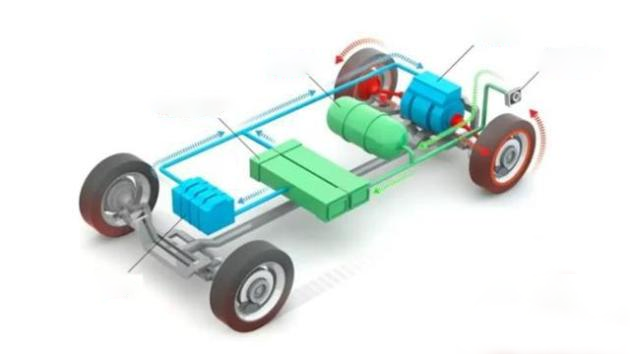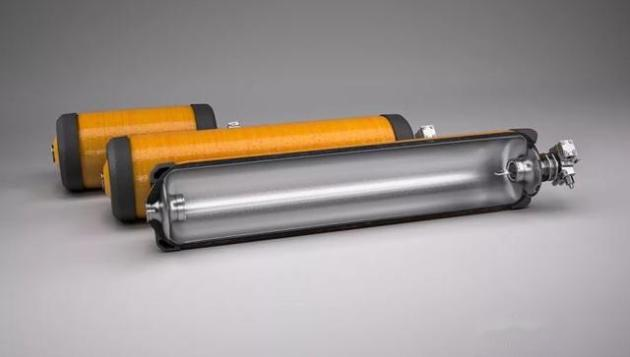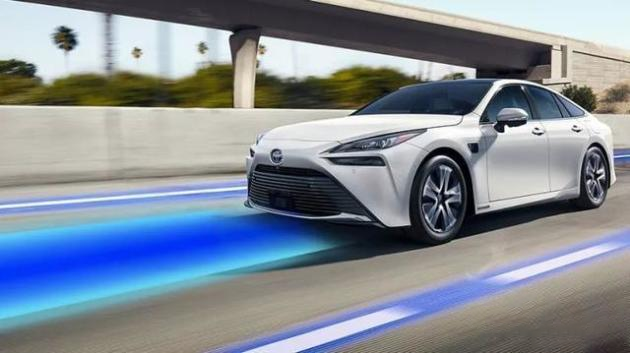Hydrogen energy vehicles, that is, fuel cell electric vehicles, can achieve zero emissions. This is also a significant feature that distinguishes hydrogen energy vehicles from pure electric/hybrid vehicles. However, currently they are not like pure electric vehicles, hybrid vehicles, and plug-in hybrids. Powered cars are so popular.

Electric and hybrid vehicles are growing in popularity, in part because they help reduce the amount of carbon emissions released into the atmosphere. But they’re not the only option for greener driving. Hydrogen fuel cell electric vehicles may sound like the stuff of science fiction, but these cars may be around for longer than you think.
Main architecture and components of hydrogen energy vehicles

What is a fuel cell?

A fuel cell is a device in which an electrochemical reaction occurs between hydrogen and oxygen. The main components of a fuel cell include anode, cathode and electrolyte. In the presence of an electrolyte, fuel ions (i.e., hydrogen ions) react with oxygen ions to produce electricity, water vapor, and heat. Furthermore, the reaction was performed only at a temperature of 800°C. Therefore, another name for this reaction is “cold combustion”. The electricity thus produced drives an electric motor, which in turn spins the vehicle’s wheels.
A single fuel cell is about 2 millimeters thick, however, it can only generate a potential difference of 1 volt. Therefore, fuel cell electric vehicles use hundreds of fuel cell arrays, called “fuel cell stacks.”
How hydrogen fuel cells work
Hydrogen vehicles are electric vehicles that use fuel cells to power their engines rather than relying primarily on lithium-ion battery packs.
Hydrogen energy vehicles also do not burn fuel like gasoline vehicles. Like electric vehicles, hydrogen vehicles do not produce harmful emissions. The only by-product is water vapor, which can achieve zero emissions. Because they are electric vehicles, you’ll also hear them referred to as fuel cell electric vehicles (FCEV).

Fuel cells are similar in design to lithium-ion batteries: They have an anode, a cathode and a catalyst that triggers the separation of electrons and protons from pumped hydrogen gas. Like the lithium-ion batteries in electric vehicle batteries, hydrogen energy vehicles have multiple fuel cells working simultaneously to generate electricity. The collection of such batteries is called a hydrogen fuel cell stack.
Hydrogen from the car’s onboard fuel tank combines with oxygen in the fuel cell stack to generate electricity through a process called reverse electrolysis. The electrons are removed from the hydrogen, run through an electrical circuit to power a motor, and combine with oxygen on the other side of the circuit to form water vapor, which is expelled through the car’s exhaust.

Depending on the situation, the electricity generated by a hydrogen fuel cell can take two paths. This energy either directly powers the electric motor or charges a small lithium-ion battery that helps power the electric motor and can store the energy for later use.
The battery can also draw power from the vehicle’s regenerative braking system for later use and store excess power from the fuel cell stack during low-energy driving. If greater demands are placed on the engine, the battery will help.
The relationship between hydrogen refueling and mileage

Refueling a fuel cell electric vehicle’s hydrogen tank is about as fast as refueling a gasoline vehicle, an important advantage hydrogen vehicles have over battery electric vehicles. You just pull up to a gas station, connect the hose, and the tank is full in about five minutes.
FCEV can install multiple hydrogen tanks on the vehicle, but if not handled properly, the hydrogen can be flammable, so the wall thickness and pressure resistance of these hydrogen tanks must be rigorously tested to ensure crash safety. Failsafes are also built into the vehicle to ensure hydrogen is dispersed and released in the event the fuel cell is removed or overheats.

Another advantage of hydrogen energy vehicles over battery electric vehicles is their longer driving range. According to relevant data, FCEVs can travel 300 to 400 miles (482km ~ 644km) before requiring hydrogen refueling. On the other hand, the average EV range for all battery electric vehicles is about 250 miles (402km).
Challenges facing hydrogen energy vehicles

Rapid refueling of hydrogen, electricity, and the only byproduct is water, it sounds like the perfect green vehicle, right, but hydrogen cars have their shortcomings.
First, although hydrogen vehicles have a greater range than electric vehicles, hydrogen vehicles are more expensive to refuel, in part because hydrogen is so expensive to produce. Although hydrogen is the most abundant element on Earth, refining it into a form that can power vehicles requires effort, and that effort is reflected in the cost of each vehicle.
FCEV hydrogenation infrastructure is also currently severely lacking, with fewer than 400 FCEV hydrogenation stations worldwide, although efforts are underway to build more gas stations. The United States aims to have 1,000 online gas stations by 2030. Still, that’s far fewer than electric vehicle charging stations, which number about 110,000 in the U.S. as of 2021.
Another challenge for hydrogen vehicles is that while they can run emissions-free on their own, the factories that make the hydrogen fuel typically do so by burning fossil fuels, a process called steam reforming. If this continues, FCEVs will not be able to protect the environment as much as they could, nor can they truly be called zero-emission vehicles.
Alternative processes for hydrogen production are currently being explored, including water electrolysis, which uses renewable energy sources such as solar energy to generate electricity and can be used to separate hydrogen from water.
